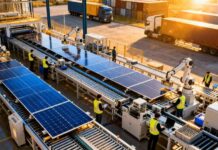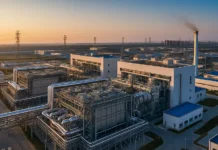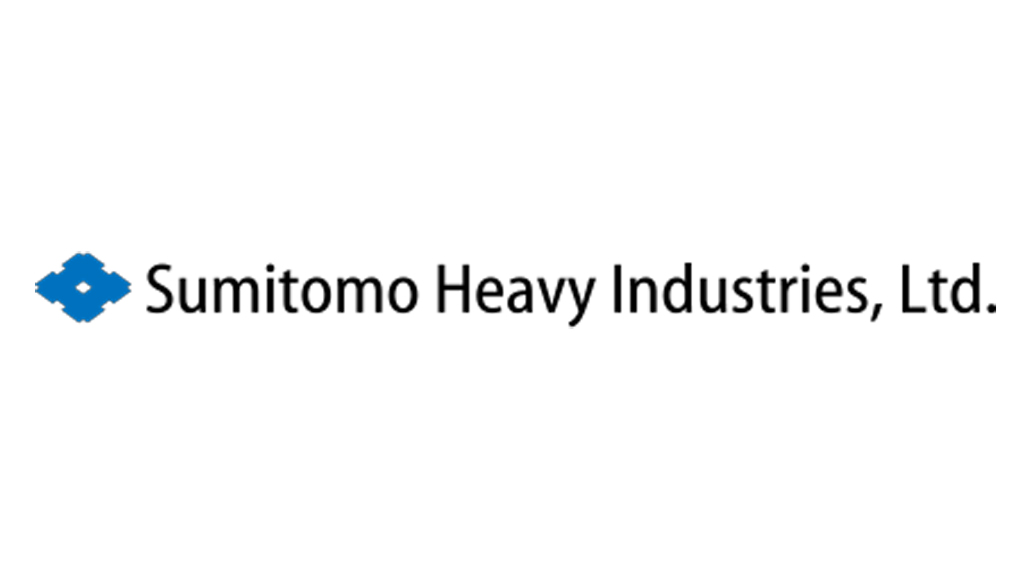Sumitomo Heavy Industries (SHI) from Japan has reportedly gone on to develop a new method in order to make a critical layer within the perovskite solar cells. The company claims that this process helps in low-temperature mass production and causes minimal substrate damage.
As per the reports, this layer happens to be the electron transport layer – ETL, which acts as a highway when it comes to electrons that are generated within the perovskite to travel to the electrode. The method by Sumitomo Heavy Industries is named reactive plasma deposition (RPD), which is a form of physical vapor deposition (PVD).
In a press release, SHI explained that although they are cost-effective as well as suitable when it comes to mass production, conventional formation methods typically happen to involve high-energy particles along with high-temperature environments.
Hence, this in turn is going to make them incompatible with the perovskite materials. Therefore, the manufacturers are actively looking out for chemical film deposition methods.
It is well to be noted that at present, perovskites happen to be a promising but very fragile technology. There are traditional methods in order to create ETLs, be they chemical or high-energy use, high-temperature, rough particles, or toxic gases. These can very well damage the perovskite material, increase the costs, and also pose a risk to safety.
The new method goes on to deposit the ultra-thin tin oxide – SnO2 ETLs at low temperatures, thereby preventing the damage to the perovskite. Tin dioxide, which is an inorganic compound and also called stannic oxide, happens to be the main ore of tin and has been made use of within numerous technologies by way of being a semiconductor.
According to SHI, tin oxide is also a very low-cost metal oxide. It is known for its massive electrical conductivity when it gets deposited by using PVD. This process makes use of non-hazardous gases, thereby making it much safer and more environmentally friendly. It is also prominently fast, reportedly 200 times faster as compared to the present methods.
Apparently, the new method also happens to be much cheaper and costs almost .5% of the present ETL manufacturing expenditure.
As per SHI, they happen to be the first in the world to go ahead and demonstrate that their PVD technology can produce SnO₂ films with the right insulating properties, which are required for ETLs. This kind of breakthrough within the technology goes on to offer quite prominent enhancement within mass manufacturing as well as cost performance as compared to the chemical film deposition method, which is at present under development by other manufacturers.
Through applying this kind of film deposition technology within the mass manufacturing of perovskite solar cells, SHI looks forward to speeding up their adoption, which in turn would contribute towards a carbon-neutral society.
There is still a lot of work to do
Quite promising as this new technology is, SHI does acknowledge that production is still pretty challenging because of the higher cost of materials and also the usage of flammable or even toxic precursor gases, which makes the scaling up of production quite tricky.
According to SHI, their method happens to be compatible with other solar cell layers and can also be done in a consistent way alongside the transparent Indium Tin Oxide (ITO) electrodes. Apparently, these cells are also mass-production friendly and move the perovskite technology a lot closer to the commercial rollout.
Apparently, this development syncs well with the Ministry of Economy, Trade and Industry of Japan’s objective of attaining 20 GW of perovskite solar capacity by 2040. In this regard, Japan is going ahead and promoting perovskite for urban usage, such as certain lightweight and flexible panels that can come up on buildings.
For instance, in 2025, Japan went on to advance the perovskite solar cell with urban pilot projects and flexible module tests and also record a 26.5% efficient perovskite-silicon tandem cell by showcasing the potential in terms of ability, durability, and also high performance.
The fact is that the advancement by SHI is not just about a new type of solar cell, but it is more about solving one of the biggest barriers when it comes to manufacturing them cheaply, safely, and also at scale. If the claims made by SHI hold true, commercialization of perovskite will be a realistic goal by the end of this decade.







































